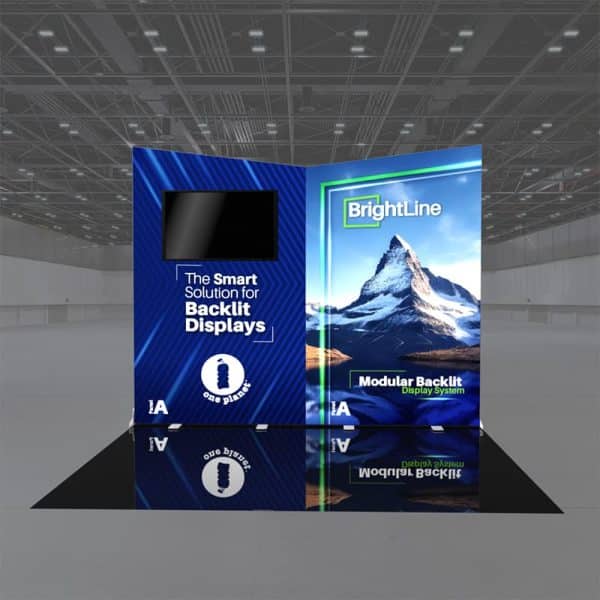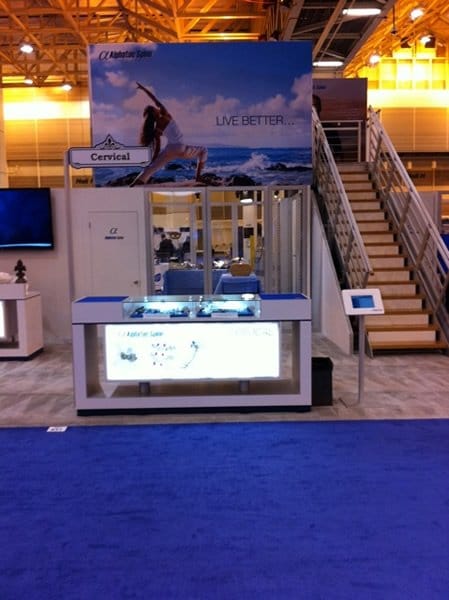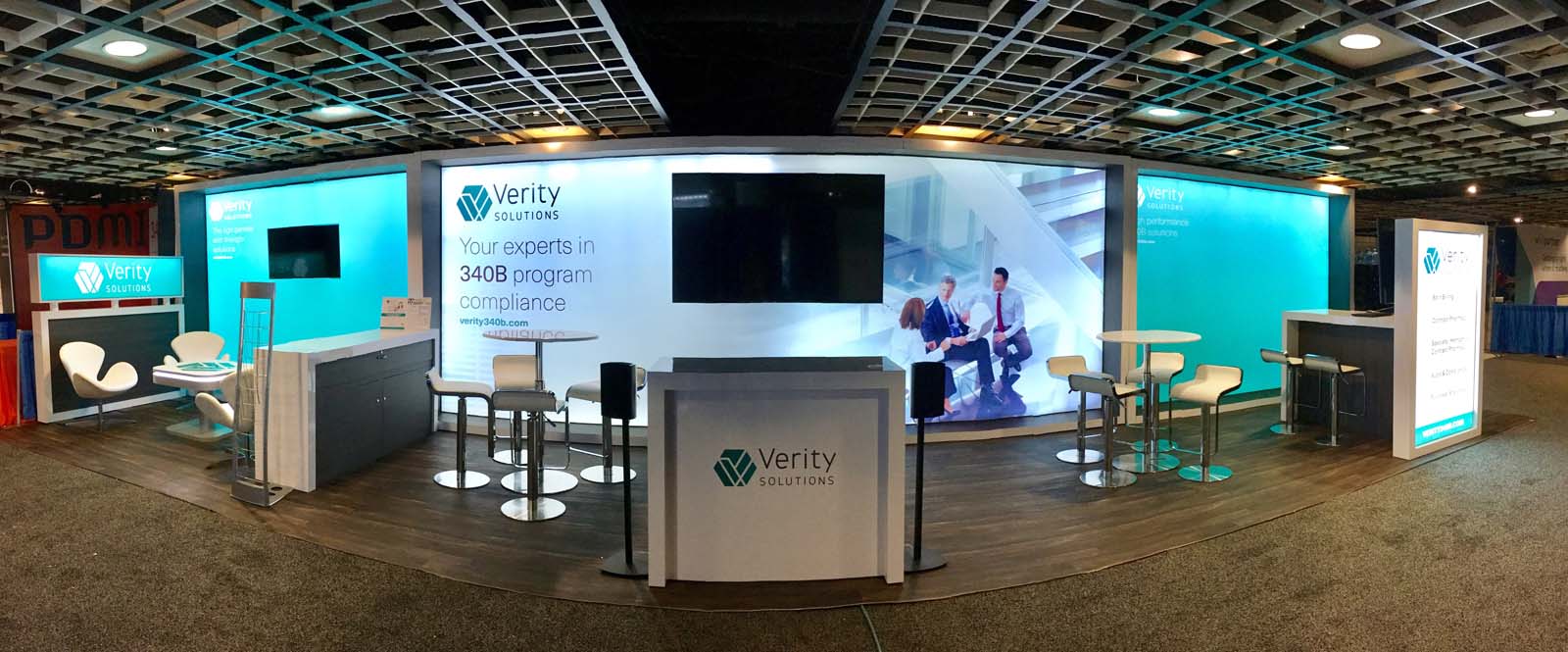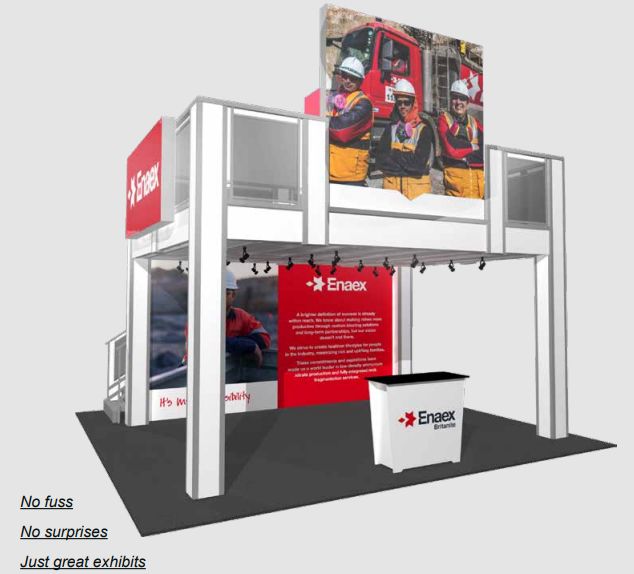Trade Show Booth Construction Company: Elevating Brand Presence at Events
Trade shows are a critical platform for businesses to showcase their brand, launch new products, and engage directly with customers and industry professionals. Central to a company’s presence at these events is its trade show booth, which serves as the physical representation of its brand and message in a bustling expo environment. Extensive planning and precise execution are required to ensure the booth encapsulates the essence of the brand while standing out among competitors.

Selecting the right trade show booth construction company is a fundamental step for businesses aiming to make a significant impact at trade shows. These companies specialize in designing and constructing booths that are not only visually appealing but also functional and aligned with the event’s objectives. Understanding the distinction between purchasing and renting booth components can affect budgeting, while considering the booth’s design and construction ensures the final product meets specific marketing goals and adapts to the logistical challenges of booth setups.
Key Takeaways
- A trade show booth is a focal point for business representation at industry events.
- Choosing a proficient construction company is crucial for creating an impactful booth.
- Effective design, construction, and logistics are integral to trade show success.
Understanding Trade Show Booth Construction
Constructing a trade show booth is an intricate process that combines creativity with structural engineering. It demands attention to detail and an understanding of how to best represent a brand within the physical space of a trade show exhibit.
Key Components of Exhibit Design
Exhibit design is the blueprint that shapes the attendee’s experience and engagement with a brand. Key components of an expertly crafted design include:
- Branding Areas: These are prominently placed to ensure maximum visibility.
- Interactive Zones: Spaces for demos or engaging activities that reflect the company’s offerings or values.
- Traffic Flow: The layout must encourage a natural flow of visitors, preventing bottlenecks while maximizing the number of interactions.
- Lighting: Strategic placement can highlight key areas or products and set the mood.
- Graphics: Large, bold visuals that tell a brand story and capture attention.
High-quality fabric and other versatile materials are often incorporated to create dynamic and visually appealing displays.
Choosing the Right Raw Materials
The selection of raw materials for a booth is critical; they must reflect the brand’s quality while being functional. Choices range from lightweight and portable to sturdy and grandiose:
- Aluminum: For frames, provides strength and flexibility.
- Fabric: It can be used for creating high-impact visuals and is both lightweight and versatile.
- Wood: Offers a classic, solid base for many structures.
- Acrylics and Plastics: Utilized for transparent or colored components.
The right combination of these materials can result in an effective trade show exhibit that stands out and withstands the rigors of the event.
Planning and Budgeting
Effective trade show booth construction requires meticulous planning and budgeting to ensure it aligns with a company’s marketing and sales goals. These preparations are crucial for optimizing the return on investment (ROI) and achieving the desired impact at a trade show.
Determining Your Budget

The first step in trade show preparation is determining your budget. Companies must assess their overall marketing funds and allocate a portion specifically for trade show booth construction. A well-defined budget includes costs for design, materials, labor, and any additional features or technology that will help the booth stand out. It’s important to consider the trade show booth cost and expenses while planning to avoid unexpected costs that can strain budgets.
Maximizing ROI on Booth Construction
To maximize ROI on booth construction, companies should prioritize high-impact elements that draw attention and encourage engagement, while also considering cost-effective options. Monitoring and adjusting the budget in real-time is key to staying on track. Post-show evaluation of the booth’s performance against the company’s sales goals is essential for measuring success and planning for future events. For strategic insights, companies can refer to The Ultimate Guide to Trade Show Budgeting‘s tips and tricks.
Designing Your Trade Show Booth
Effective trade show booth design is essential for standing out in the busy landscape of corporate events. It not only reflects the company’s identity but also acts as a physical embodiment of its marketing message.
Innovative and Eye-catching Exhibit Design
Trade shows are competitive arenas, and an innovative and eye-catching exhibit is critical for drawing attention. The design process should begin with a focus on uniqueness and attractiveness, ensuring that the exhibit not only captures interest but also engages visitors effectively. Companies like Exponents specialize in crafting booths that align with specific brand visions while maintaining a distinct appeal.
Incorporating Your Brand’s Logo and Colors

A company’s logo and colors are fundamental elements of its brand identity. When visitors see a trade show booth, they should immediately recognize the company’s brand through strategic placement and use of logos and corporate colors. This familiarity can be achieved through tasteful integration across various elements of the booth, from banners to product displays. Firms such as ExpoMarketing have expertise in creating displays that resonate with the brand’s visual identity.
Custom Trade Show Display Approaches
Custom exhibits are tailored solutions that embrace a company’s characteristics and cater to specific marketing goals. These personalized displays can range from modular designs to elaborate installations, each reflecting the brand’s mission and vision. Services like those offered by Expostandservice combine market research and customer insights in order to fabricate booths that are both functional and visually compelling. By taking a custom approach, businesses ensure that their trade show presence is truly one-of-a-kind.
Building and Construction
The construction phase of a trade show booth is critical for ensuring the structure is both visually compelling and adheres to trade show guidelines. It involves selecting superior materials, working closely with graphic designers, and comprehensively understanding the rules and regulations of the trade show.
Selection of High-Quality Materials
A successful trade show booth relies on the use of high-quality materials to both attract attention and ensure durability. Companies like Exponents prioritize custom fabrication to ensure brand specificity and resilience. Materials range from lightweight aluminum for easy transportation to high-grade textiles for banners and displays, all chosen for their long-lasting nature and visual appeal.
Collaboration with Graphic Designers
The aesthetics of a booth are brought to life by graphic designers who integrate the brand’s mission into the booth’s design. Designers from companies such as ExpoMarketing provide eye-catching graphics that can transform a simple space into a powerful brand statement. The key is a synergetic relationship where construction experts and designers work hand in hand to ensure the graphics fit perfectly within the physical structure.
Understanding Trade Show Rules and Regulations
Adherence to trade show regulations is paramount. Each venue has its own set of guidelines concerning booth size, material usage, and installation processes. Experienced builders, including Triumfo, navigate these regulations expertly to prevent any compliance issues that could arise. They liaise with event organizers and follow pre-established protocols to ensure a smooth build-up and dismantling process, avoiding any potential fines or complications.
Beyond the Booth
When considering trade show success, it extends well beyond the initial construction of the booth. It involves continuous customer service and the creation of spaces that are both interactive and enduring. The following subsections outline these critical aspects.
Customer Service and Engagement Strategies

Trade show attendees expect not just visual appeal from a booth, but also an engaging and responsive experience. Companies should train their staff extensively in product knowledge and customer engagement, ensuring that each visitor receives individual attention. Interaction should be the cornerstone of the booth’s design, incorporating demonstrations or live presentations that can make a lasting impression.
Example Engagement Tools:
- Interactive kiosks
- Live product demos
- Q&A sessions
Strategies must also include a strong post-trade show plan. Follow-up communication is key to solidify relationships and should be as personalized as the booth experience. ExpoMarketing emphasizes the importance of experienced professionals who can guide companies in creating these meaningful connections.
Creating Mobile and Permanent Booth Environments
Mobile environments provide the flexibility needed for various trade show scenarios, while permanent ones offer a consistent brand experience for recurring visitors. Both serve strategic purposes in a company’s trade show arsenal.
Mobile Environments:
- Are adaptable for different spaces
- Can be easily transported and set up
- Allow for a fresh look at each event
In contrast, permanent environments:
- Reflect a company’s commitment to their industry presence
- Build upon brand recognition over time
- Create a ‘home-base’ for loyal clients and staff
Organizations like Sensations Exhibits focus on delivering custom booth designs that can be modified for temporary setups or evolve into more permanent displays. Proper construction and design play a significant role in achieving longevity and adaptability of the booth space.
Logistics and Program Management
Effective logistics and program management are critical for the success of any trade show exhibit. The project manager plays a pivotal role in ensuring the exhibition stand is delivered, assembled, and dismantled efficiently.
The Role of the Project Manager
The core responsibility of the project manager in trade show booth construction is to orchestrate the planning, execution, and closure of the project. They serve as the main point of contact between the client and various teams involved. For an exhibition stand, this includes overseeing budget management, timeline coordination, and vendor communications. The project manager ensures that every detail aligns with the client’s vision and the exhibition’s requirements.
Transport and Installation of Exhibition Stands
Transport and installation form the backbone of exhibition stand logistics. The transport process must be meticulously planned to account for the secure and timely delivery of materials to the venue. Once on-site, installation requires skilled labor—this aspect is often managed by the construction company to ensure the stand is assembled according to the predefined design specifications. Post-event, the dismantling and transportation back to storage or the next location are coordinated with equal precision.
Each of these steps is crucial for maintaining the integrity and aesthetic of the exhibition stand, ultimately contributing to a successful trade show presence.
Rental or Purchase Options

When considering participation in trade shows, companies are faced with a decision to either rent or purchase their exhibit space. This critical choice is often influenced by factors such as budget, frequency of trade show participation, and the desire for flexibility or brand consistency.
Benefits of Trade Show Exhibit Rentals
Trade show exhibit rentals provide substantial flexibility and cost savings for companies not looking to invest in ownership. Rentals allow for adapting the design to different trade show spaces and can be a practical choice for companies with a less frequent trade show schedule. Moreover, rental exhibits eliminate the need for storage and maintenance, which can be significant advantages for businesses looking to minimize long-term costs.
- Flexibility in Design: Each trade show can feature a new look that aligns with the latest branding or marketing campaigns.
- Cost-Effectiveness: Opting to rent can reduce upfront investment, especially for businesses testing the waters in the trade show circuit.
Owning Custom Trade Show Booths
Choosing to own a custom trade show booth becomes advantageous for companies that value consistency in branding and participate in numerous shows annually. Custom trade show displays reflect a company’s brand with precision and can be designed to the exact specifications that suit the marketing needs. Furthermore, purchasing a booth can be more economical over time.
- Brand Consistency: Ownership ensures that the company’s branding is consistent across all trade shows.
- Long-Term Investment: Although the upfront cost is higher, owning a booth can decrease overall expenses in a long-term trade show marketing strategy.
In both scenarios—whether opting for trade show exhibit rental or ownership of custom trade show booths—companies should consider their specific marketing goals, budget constraints, and event schedules to make the most informed decision.
Success Metrics
Evaluating the performance of a trade show exhibit is crucial to determine its return on investment and guide future strategies.
Measuring the Success of Your Trade Show Booth
- Leads Generated: A primary indicator of success is the number of leads generated. This metric reflects the potential customer interest and the effectiveness of the booth in initiating sales conversations.
- Cost Per Lead: Calculating the cost per lead helps assess the financial efficiency of the trade show exhibit. It is determined by dividing the total cost of the trade show presence by the number of leads acquired.
- Sales Conversion Rate: The transition of leads to actual sales, or the sales conversion rate, is a definitive measure of the exhibit’s effectiveness in contributing to the company’s revenue.
- Booth Traffic: Monitoring booth traffic, the total count of visitors is essential, but one must also discern the qualitative aspects such as visitor engagement and interaction depth.
- Social Media Engagement: Increased social media activity related to the trade show can signal successful brand exposure and is measurable through likes, shares, and mentions.
- Brand Awareness: Sustained or increased brand recognition post-event is indicative of an exhibit’s reach and can be evaluated via surveys and monitoring brand-related discussions.
- Customer Interaction: The quality and quantity of customer interactions at the booth reflect its ability to captivate and engage the target audience effectively.
Market Analysis and Competition

Businessman drawing an exponential curve of a progress in business growth performance, return on investment – ROI, on a virtual screen presentation.
In the competitive landscape of the USA’s trade show industry, companies strive to adopt cutting-edge booth solutions to stand out. This section delves into the prevailing trends within this market and provides a critical assessment of how businesses stack up against one another in the realm of trade show booth construction.
Understanding Industry Trends
The trade show industry in the USA is marked by a dynamic evolution of trends that dictate the effectiveness and popularity of booth designs. One notable trend is the shift towards incorporating sustainable materials and practices in booth construction, which reflects a growing environmental awareness. Companies that prioritize eco-friendly solutions are gaining a competitive edge. Technological integration, including the use of virtual and augmented reality, has also become a key factor in booth design, enhancing visitor engagement.
- Sustainable Materials: Recycled or biodegradable elements are increasingly preferred.
- Technological Advancements: VR and AR are modernizing the visitor experience.
- Customization: Tailored booths that speak to specific brand identities are in demand.
Analyzing Competitor Booth Solutions
When examining competitors’ booth solutions, it’s important to evaluate both design innovation and functional utility. Top competitors in the industry often showcase portfolios that reflect their ability to balance aesthetic appeal with practical features designed to maximize attendee engagement and brand exposure. For example, companies like ExpoMarketing provide dynamic exhibit booths that capture the essence of a brand, while Exponents offers trade show displays in a wide range of dimensions along with full-service construction.
- Design and Innovation: Leaders in the field exhibit creative designs that are both eye-catching and aligned with brand messaging.
- Brand Representation: Effective booths are extensions of the brand narrative.
- Clientele: The top-tier providers serve high-profile clients, demonstrating their ability to meet diverse and demanding requirements.
Developing a Trade Show Strategy
A successful trade show strategy hinges on customizing your approach to your booth size and the distinctive design capabilities of companies like ProExhibits. The following sections detail critical considerations to maximize your brand’s impact at your next event.
Tailoring Your Strategy According to Booth Size
A company’s trade show success can often be predicted by how well their strategy is tailored to their booth size. For smaller booths, one should concentrate on clear, prominent branding and succinct messaging that communicates their value proposition effectively. Limited space necessitates smart use of visuals and lighting to draw attention. Conversely, larger booths have the luxury of accommodating more elaborate features, such as multimedia displays or demo areas, but it is crucial that each element serves a purpose in line with the company’s overall marketing goals.
Leveraging ProExhibits-Designed Booths for Impact
ProExhibits is renowned for crafting booths that are not only visually striking but also engineered to foster engagement and conversions. When developing a trade show strategy with a ProExhibits-designed booth, companies have the advantage of their innovative designs that inherently direct visitor flow and spotlight key offerings. Integrating their expertise into one’s trade show strategy means an emphasis on custom solutions that reflect brand identity and facilitate interactions that align with marketing objectives.
Frequently Asked Questions
Selecting the right trade show booth construction company and maximizing your investment are essential to success at trade shows. These FAQs will guide your decisions from booth design to execution to ensure a standout presence.
What are the key factors to consider when selecting a trade show booth construction company?
When selecting a trade show booth construction company, it’s crucial to assess their portfolio for quality and creativity, check client testimonials for reliability, and understand their process to ensure alignment with your event timelines and budget.
How long does it typically take to design and construct a custom trade show booth?
The design and construction of a custom trade show booth can range from several weeks to months. Factors such as complexity of design, availability of materials, and the company’s current workload affect the timeframe.
What are the benefits of choosing a portable trade show display over a custom-built booth?
Portable trade show displays offer cost savings, ease of transport, and quick assembly. They are ideal for companies that attend multiple trade shows annually and need a flexible, efficient solution.
How can I find a reputable trade show booth design company in my area?
To find a reputable trade show booth design company in your area, start with industry referrals, research local companies, and look for those with comprehensive services and an impressive track record.
What elements are essential for a modern trade show booth design to stand out?
A modern trade show booth should feature bold branding, interactive elements, clear messaging, and innovative design to capture attention and engage passersby effectively.
What strategies should companies employ to maximize their ROI at trade shows?
Companies should focus on pre-show marketing, on-point branding, trained staff, compelling product demonstrations, and post-show follow-up to maximize their ROI at trade shows.
